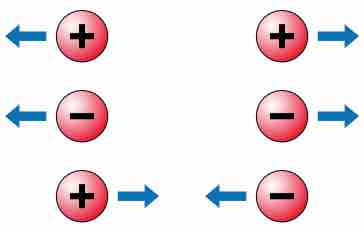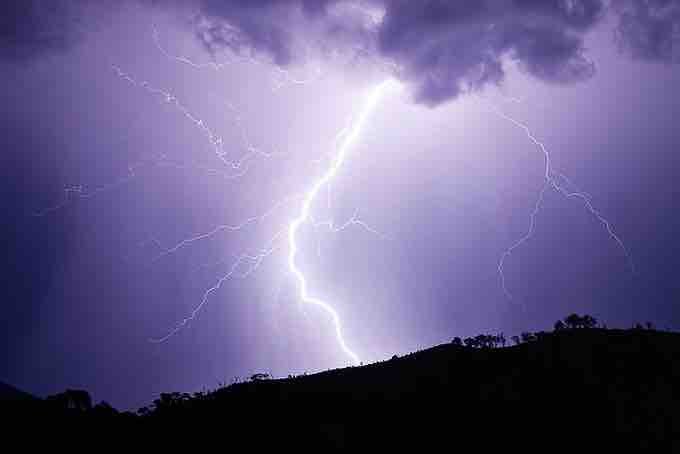Electric charge is a physical property of matter. It is created by an imbalance in a substance's number of protons and electrons. The matter is positively charged if it contains more protons than electrons, and it is negatively charged if it contains more electrons than protons. In both instances, charged particles will experience a force when in the presence of other charged matter.
Charges of like sign (positive and positive, or negative and negative) will repel each other, whereas charges of opposite sign (positive and negative) will attract each another, as shown in .

Charge Repulsion and Attraction
Charges of like sign (positive and positive, or negative and negative) will repel each other, whereas charges of opposite sign (positive and negative) will attract each other.
The SI unit for charge is the Coulomb (C), which is approximately equal to
Conservation of Charge
Charge, like matter, is essentially constant throughout the universe and over time. In physics, charge conservation is the principle that electric charge can neither be created nor destroyed. The net quantity of electric charge, the amount of positive charge minus the amount of negative charge in the universe, is always conserved.
For any finite volume, the law of conservation of charge (Q) can be written as a continuity equation:
where Q(t1) is the charge in the system at a given time, Q(t2) is the charge in the same system at a later time, Qin is the charge that has entered the system between the two times, and Qout is the amount of charge that has left the system between the two times.
This does not mean that individual positive and negative charges cannot be created or destroyed. Electric charge is carried by subatomic particles such as electrons and protons, which can be created and destroyed. For example, when particles are destroyed, equal numbers of positive and negative charges are destroyed, keeping the net amount of charge unchanged.
Static Electricity
Static electricity is when an excess of electric charge collects on an object's surface. It can be created through contact between materials, a buildup of pressure or heat, or the presence of a charge. Static electricity can also be created through friction between a balloon (or another object) and human hair (see ). It can be observed in storm clouds as a result of pressure buildup; lightning (see ) is the discharge that occurs after the charge exceeds a critical concentration.

Static Electricity
Due to friction between her hair and the plastic slide, the girl on the left has created charge separation, resulting in her hair being attracted to the slide.

Lightning
Lightning is a dramatic natural example of static discharge.